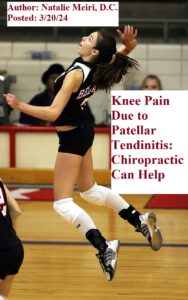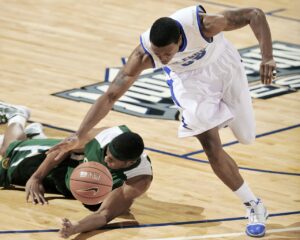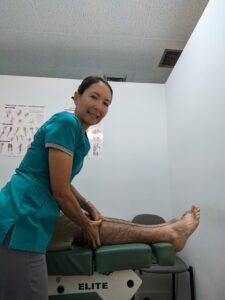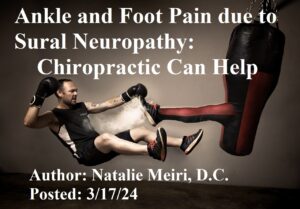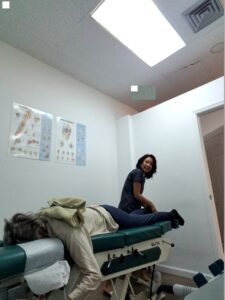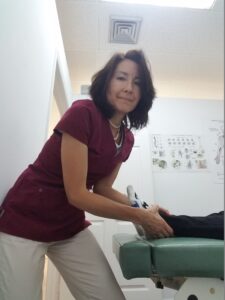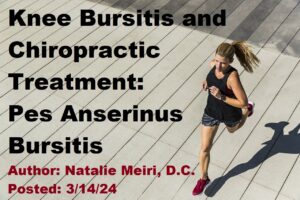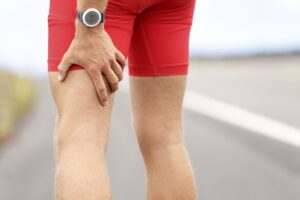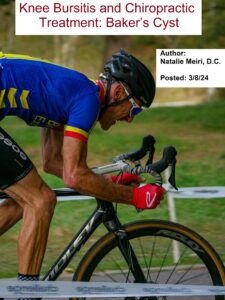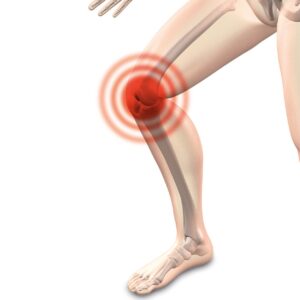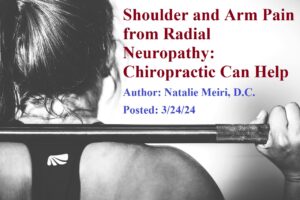
Do you have Paresthesia (tingling, numbness or “pins and needles”) in your shoulder or arm (above the elbow)? Also, do you have weakness in your arm? You may have limitation of motion of your triceps muscle? These are all symptoms of Radial Neuropathy/Entrapment above the elbow. Read on to learn about Shoulder and Arm Pain Due to Radial Neuropathy: Chiropractic Can Help.
Anatomy of the Radial Nerve
The radial nerve is the terminal (end) continuation of the posterior (back) part of the brachial plexus. And the brachial plexus is a bundle of nerves that originate from nerve roots in the cervical (neck) and upper thoracic (torso) sections of the spinal cord (C5-T1). Ultimately, the brachial plexus creates a network that connects to the nerves in the arm. Therefore, the radial nerve contains fibres from nerve roots C5 – T1.
It arises from the axilla and exits the axilla inferiorly (below). Next, it supplies branches to the long and lateral heads of the triceps brachii muscle.
The radial nerve then descends down the arm. It travels in a shallow depression within the surface of the humerus (long upper arm bone), known as the radial groove.
To enter the forearm, the radial nerve travels anterior (front of) to the epicondyle of the humerus, through the cubital fossa of the elbow. The nerve then ends by dividing into two branches:
- Deep branch (motor) – innervates (supplies) the muscles in the posterior (back) compartment of the forearm.
- Superficial branch (sensory) – contributes to the cutaneous (skin) innervation of the dorsal (back) hand and fingers.
Shoulder and Arm Pain from Radial Neuropathy: Chiropractic Can Help-
Entrapment Sites
High Radial Nerve compression
High radial nerve compression involves compression from the axilla to the proximal (beginning) elbow. Entrapment can first occur as the radial nerve passes in front of the subscapularis (one of 4 rotator cuff muscles), tendons of the latissimus dorsi and teres major muscles.
Furthermore, entrapment can include axillary compression and compression at the spiral groove of the humerus, fibrous arcade (band) at the origin of the lateral head of triceps muscle and within the triceps muscle.
Compression proximal (near) to the elbow
Entrapment occurs proximal (nearer) to the elbow on the lateral (side) position between the brachialis (muscle goes from humerus and inserts to ulna bone of elbow) and brachioradialis (muscle goes from humerus to radius bone at wrist).
Symptoms/ Signs of Radial Neuropathy
As mentioned previously, there is usually weakness of the triceps if the compression is in the axillary area. This differentiates higher from lower levels of compression. Moreover, entrapment from the level of the spiral groove of the humerus down usually does not affect the triceps.
However, if severe enough, compression in the axilla can be very extensive. It can lead to loss of elbow, wrist (wrist drop) and finger extension. This is because entrapment at the axilla affects all of the motor and sensory (possible numbness) radial distributions.
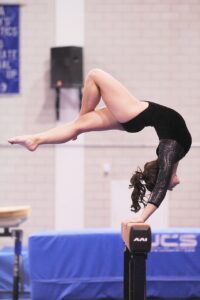
Radial Neuropathy/Nerve Entrapment Causes
Firstly, your pain and paresthesias (numbness and tingling) could have come on insidiously (gradually). However, radial neuropathy/nerve entrapment can be due to various causes such as trauma, tumor, scaring/fascial restrictions, fracture, and tourniquet or crutch use causing pressure at the axilla.
Secondly, Saturday night palsy; where you are sleeping with the head on an outstretched hyperabducted (stretched above head) arm may lead to it as well.
Thirdly, sports such as gymnastics and wrestling may be a cause due to some of the maneuvers.
Fourthly, other sports such as baseball and weight lifting where your elbow is forcefully extended may be a cause.
Fifthly, even runners are at risk for radial neuropathy. Runner’s Radial nerve palsy occurs due to keeping the elbow tightly flexed while running. This causes numbness in the forearm and dorsal (upper) hand.
Sixthly, repetitive or prolonged muscle contracture in laborers and throwers may be a cause.

Treatment at Meiri Chiropractic for Radial Neuropathy:
-Soft tissue techniques will be rendered to the contracted fibrotic muscle and collagen at entrapment sites.
-Chiropractic adjustments (chiropractic manipulative therapy) to the shoulder, elbow and associated restricted joints along the kinetic chain and spine is important.
-Therapeutic exercise will be given for stretching and strengthening.
-If trauma or swelling is involved, ice, compression, elevation, and physical therapy modalities is utilized to reduce swelling. Ergonomic recommendations to change the inciting activity is necessary.
Are your suffering from shoulder or arm pain from Radial Neuropathy?
We offer excellent Chiropractic care for Radial Neuropathy. At Meiri Chiropractic, we spend the time necessary to examine, diagnose and treat every neuromusculoskeletal condition and various ailments you have. Indeed, Chiropractic is a holistic and natural way to not only treat shoulder and arm pain, but to keep your body in its best working condition. We have been offering effective chiropractic care in West Palm Beach since 2006. Many of our patients reviews note our excellence. Call us today at 561-253-8984 to make an appointment or to find out more about Shoulder and Arm Pain from Radial Neuropathy: Chiropractic Can Help.
